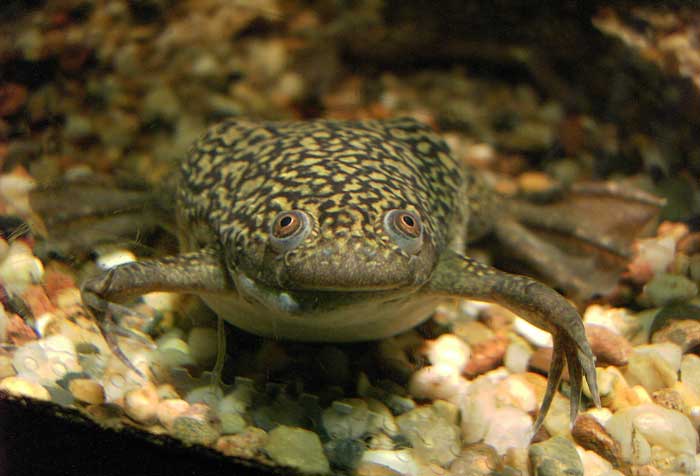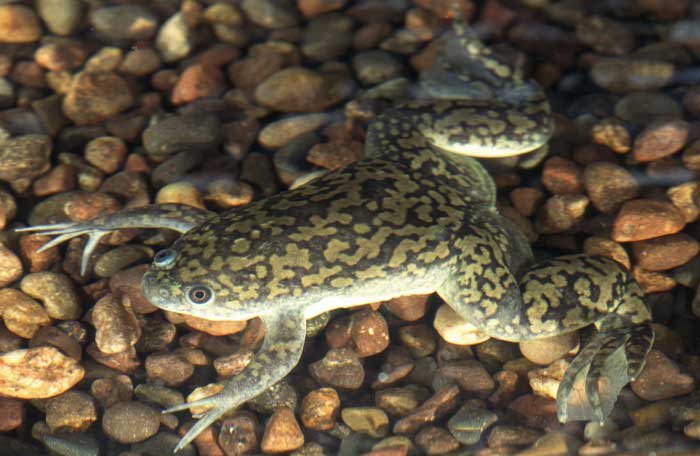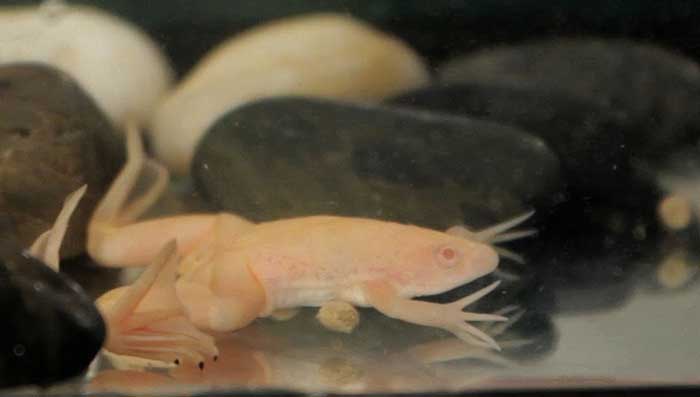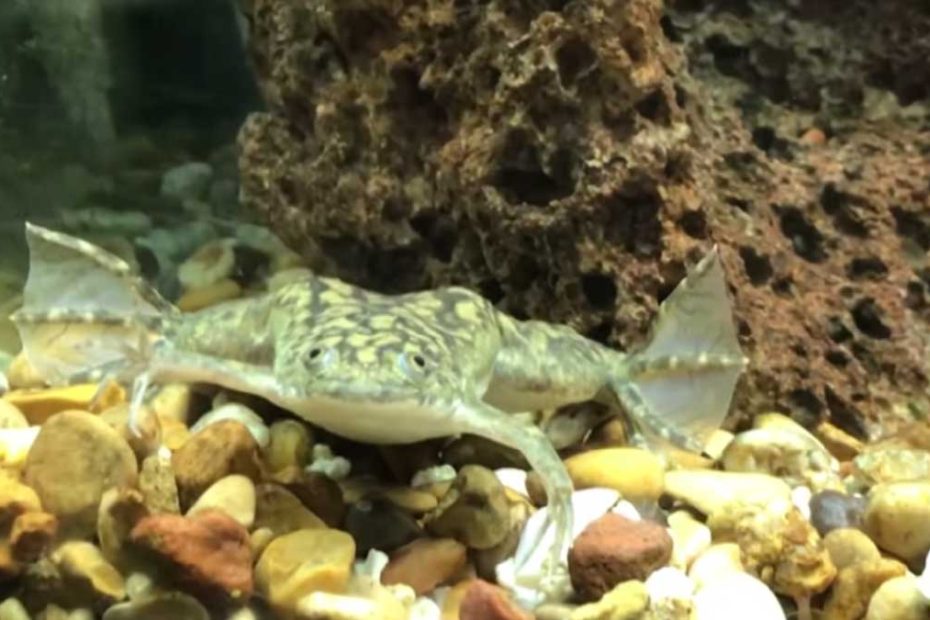Be it for research purposes or keeping as pets, African clawed frogs have always been valued by frog lovers. And to keep the clawed frog in captivity, you must consider the average lifespan of the species.
Hence, the question arises, African clawed frog lifespan: How long do they live? African clawed frogs live for 5 to 15 years in their natural habitat. But they live longer in captivity, typically up to 20 years. However, some captive African clawed frogs can survive for 30 years.
Read on to discover all about the longevity of African clawed frogs, their life cycle, and factors that influence their aging.
African Clawed Frog Lifespan: 5 Influential Factors

How long an African clawed frog will live depends on their habitat environment, temperature, predation or disease, and availability of food. Here’s how these factors influence the lifespan of an African clawed frog:
1. Habitat Environment
When it comes to the lifespan of any frog, the first thing to consider is their habitat environment. In general, captive frogs survive several years longer than the wild ones.
That’s because captive frogs are kept in a more controlled environment with reduced exposure to natural threats. Besides, they receive a consistent and balanced diet along with timely treatment.
On the other hand, wild African clawed frogs face numerous challenges, such as habitat loss, pollution, and climate change. Hence, they have a shorter lifespan.

2. Temperature and Metabolism Rate
According to a study on four amphibian species, warmer temperatures typically result in a decreased lifespan. When the temperatures are high, an African clawed frog’s metabolic rates also increase. It results in faster toxin production, leading to cell damage and faster aging.
The native habitat of African clawed frogs is in tropical sub-Saharan Africa. They can tolerate a wider range of temperatures, from as low as 50°F (10°C) to as high as 85°F (29°C).
African clawed frogs are ectotherms, and they often hibernate during the winter months. This way, clawed frogs living in colder climates live longer.
3. Availability of Food Sources
Adequate food resources contribute to the health and reproduction of frogs. The availability of food sources influences their growth, reproductive success, and resilience against diseases.
However, high food resources also increase their metabolic rate. But it also makes the reproduction stage shorter and more energy-consuming.
In contrast, in colder climates where the food resources are not as abundant, frogs use less energy and elongate their reproduction stage. Therefore, they typically have a longer lifespan.

4. Predation or Disease
Most African clawed frogs are vulnerable to predation and different types of diseases. Although captive frogs are safe from predators, they can still get diseased and die of illness. Sometimes, a particular disease can wipe out an entire population of frogs living in the same area.
The lack of proper veterinary care, abundance of predators, contaminated water, infection, etc., decrease the longevity of African clawed frogs.
5. Chances of Reproduction
Although reproduction is a must for replenishing frog populations, it can shorten the lifespan of an African-clawed frog. During the reproduction stage, necessary resources such as food and energy are diverted away from other important bodily functions.

A study found that female African clawed frogs that reproduced had a shorter lifespan than those that did not. That’s because the frog has to produce a huge number of eggs and provide nutrition to the tadpoles.
Similarly, male frogs also have to release large quantities of sperm during the breeding season. As reproduction is a very energy-intensive process for both male and female frogs, it typically affects their lifespans negatively.
A Detailed Look at the Life Cycle of African Clawed Frog with Time Spent

Just like most amphibians, the life cycle of an African clawed frog is divided into 5 main stages. Let’s go through the different stages from fertilization to adulthood and evaluate how much time is spent in each stage.
| Life Cycle Phase | Average Time Spent |
|---|---|
| Fertilized Egg | 1 to 2 weeks |
| Tadpole | 6 to 8 weeks |
| Metamorphosis | 8 to 12 weeks |
| Froglet | 12 to 16 weeks |
| Adult Frog | 12 to 14 years |
Stage 1: Fertilized Egg
After mating, female African clawed frogs lay clusters of sticky eggs within a 3- to 4-hour span. Hundreds of eggs are directly laid in the water, where the male frogs fertilize them. Each fertilized egg is a small, black sphere surrounded by a jelly-like coating.
The coating protects the egg from predators and helps to keep it moist. Within a few days, the eggs develop, and the embryo begins to form. Typically, the eggs hatch within 1-2 weeks, depending on the water temperature.
Stage 2: Tadpole
Although adult African clawed frogs are strictly carnivores, tadpoles are herbivorous. They filter feed on algae and other microorganisms. Frog tadpoles are small, fish-like creatures with a long tail and gills.
As the tadpole grows, it begins to develop legs and lungs. The tail also begins to shorten. When the tadpole is fully developed, it will metamorphose into an adult frog. The tadpole stage lasts for about 6-8 weeks.

Stage 3: Metamorphosis
During metamorphosis, the tadpole undergoes a dramatic transformation into an adult frog. The tail is absorbed into the body, the gills disappear, and the lungs develop. Eventually, the frog also develops legs and eyelids. Metamorphosis takes about 8 to 12 weeks.
Stage 4: Froglet
Once the metamorphosis is done, the frog now resembles more of its adult version. During its froglet stage, the baby frog develops all the necessary organs needed to survive on water and land.
Froglets have both lungs and the ability to breathe through their skin. This stage lasts approximately 12 to 16 weeks.
Stage 5: Adult Frog
African clawed frogs reach full maturity within 1 to 3 years. The exact amount of time depends on factors like food availability and environmental conditions. Adult frogs are carnivorous and feed on insects, worms, and other small animals.
The adult stage of an African clawed frog lasts for 12 to 14 years on average. During this time, they can go dormant for up to a year to survive drought and other adverse environments.

FAQs
In this section, I’ll answer some common queries frog enthusiasts often have regarding the lifespan of African clawed frogs.
Yes, female African clawed frogs might live a couple of years longer than their male counterparts. That’s because females are 25% larger than males and have a slower metabolism. However, the evidence regarding this difference in lifespans isn’t that strong.
Yes, humidity can affect the lifespan of African clawed frogs. The frog’s skin will become dry and flaky if the humidity is too low. It will also develop respiratory problems, leading to a shorter lifespan. The ideal humidity for African clawed frogs is between 70% and 80%.
To increase the survival chances of a captive African clawed frog, you must provide it with a safe and comfortable environment. Maintain good water quality, regulate the water temperature, and ensure a healthy diet. Finally, take your frog to the vet for regular checkups.
Bottom Line
While exploring the African clawed frog lifespan, I’ve discussed how these amphibians can live anywhere from 5 to 30 years. The lifespan of this species depends mainly on their environment, temperature, food sources, and reproduction.
If you take a look at the life cycle of African clawed frogs, the development stage from fertilized egg to adulthood is only 1 to 3 years long. So, the adult stage is all that matters. For captive frogs, ensure a healthy diet and suitable environment to extend their lifespan.

Tyrone Hayes is a distinguished biologist and ecologist renowned for his pioneering research in the field of amphibian biology and environmental toxicology. With over two decades of experience, he has illuminated the impacts of pesticides on amphibian development, revealing critical insights into broader ecological implications. Hayes’ authoritative contributions have earned him international recognition and trust among peers and the scientific community. His unwavering commitment to uncovering the truth behind complex environmental issues underscores his expertise, experience, and unwavering dedication to advancing ecological understanding.
